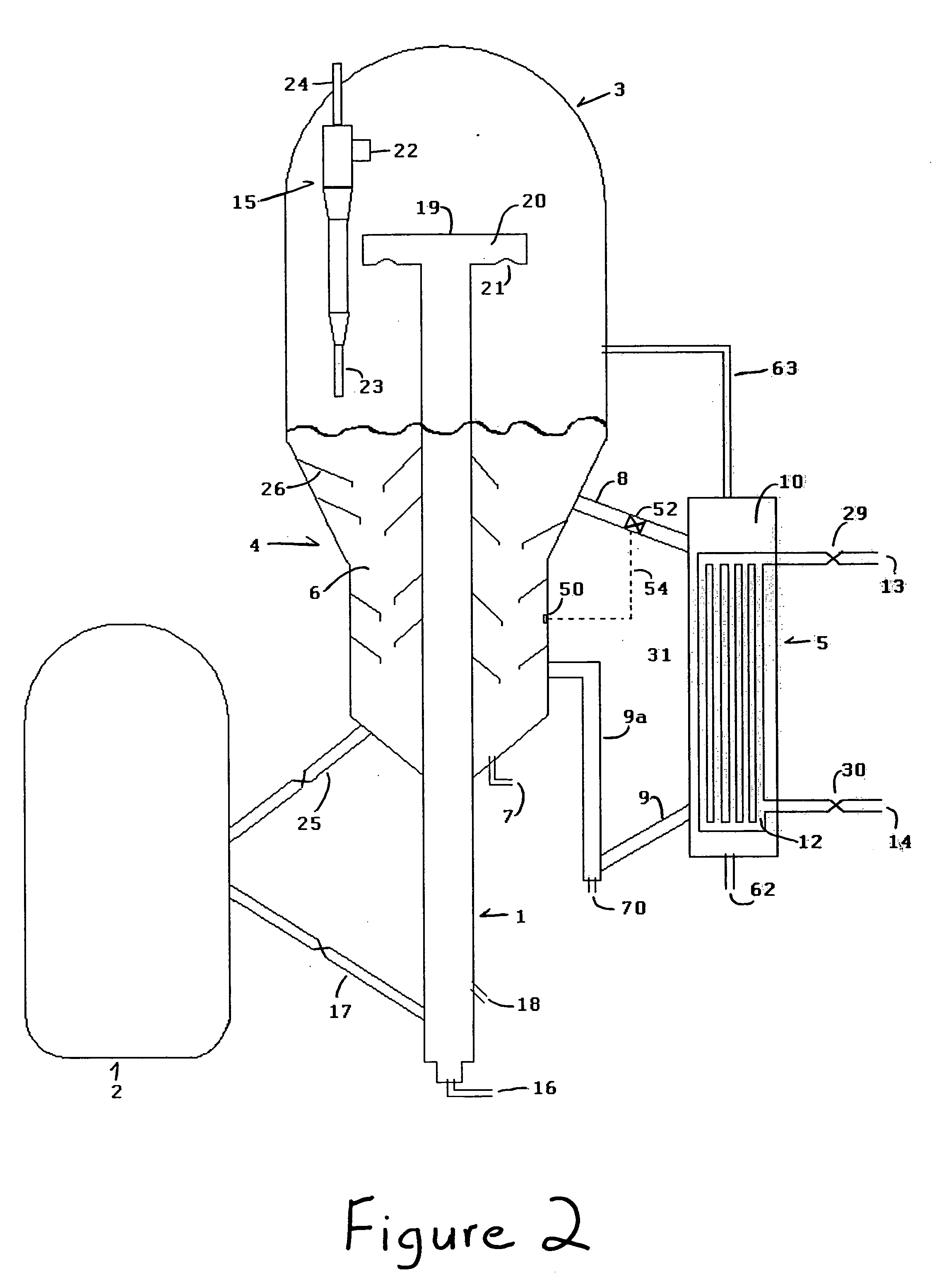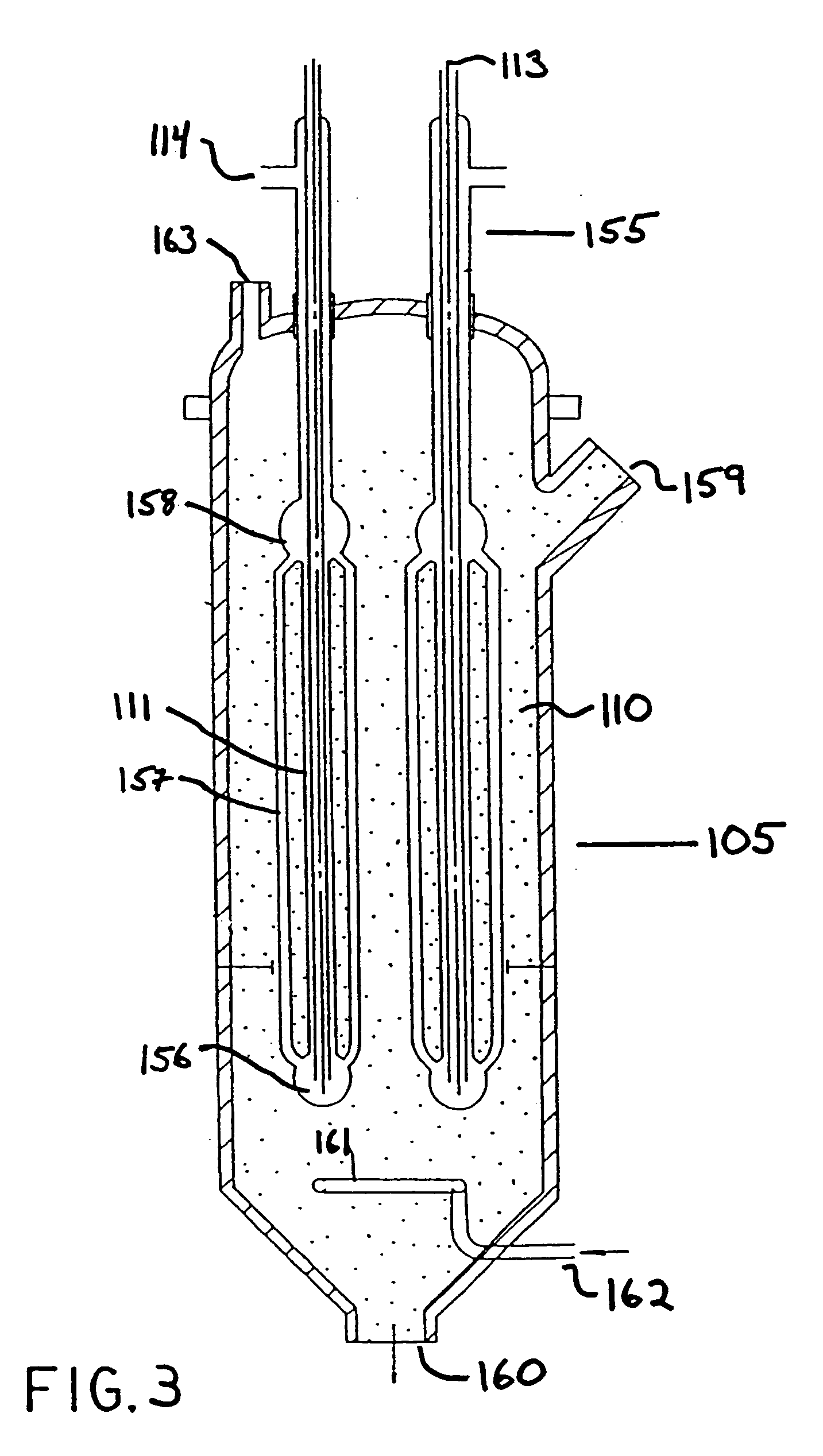Process and apparatus for controlling catalyst temperature in a catalyst stripper
a technology of catalyst stripper and temperature control, which is applied in lighting and heating apparatus, furnace types, furnaces, etc., can solve the problems of affecting the service life of catalysts, etc., to improve the service life, prolong the life of catalysts, and improve the effect of temperature control, safety and servi
- Summary
- Abstract
- Description
- Claims
- Application Information
AI Technical Summary
Benefits of technology
Problems solved by technology
Method used
Image
Examples
Embodiment Construction
[0028] The apparatus and process of the present invention comprises a cracking reactor, a disengager, a catalyst regeneration system and a novel catalyst stripper system comprising a temperature monitoring means and a catalyst cooling means comprising a heat exchanger in flow communication with the catalyst stripper. The present process and apparatus reduces the temperature of the catalyst in the stripper zone through indirect cooling utilizing indirect heat exchange between the catalyst and a cooling liquid within the catalyst cooler.
[0029] In preferred embodiments of the present invention, the present invention has application to any of the relatively high temperature catalytic cracking operations for producing olefins in the presence of steam known to those skilled in the art. In these systems, due to the presence of steam and high temperatures, catalyst deactivation becomes a more acute problem. For example, the present invention has application to fluid catalytic cracking (FCC...
PUM
| Property | Measurement | Unit |
|---|---|---|
| temperature | aaaaa | aaaaa |
| temperature | aaaaa | aaaaa |
| temperature | aaaaa | aaaaa |
Abstract
Description
Claims
Application Information
 Login to View More
Login to View More - R&D
- Intellectual Property
- Life Sciences
- Materials
- Tech Scout
- Unparalleled Data Quality
- Higher Quality Content
- 60% Fewer Hallucinations
Browse by: Latest US Patents, China's latest patents, Technical Efficacy Thesaurus, Application Domain, Technology Topic, Popular Technical Reports.
© 2025 PatSnap. All rights reserved.Legal|Privacy policy|Modern Slavery Act Transparency Statement|Sitemap|About US| Contact US: help@patsnap.com



